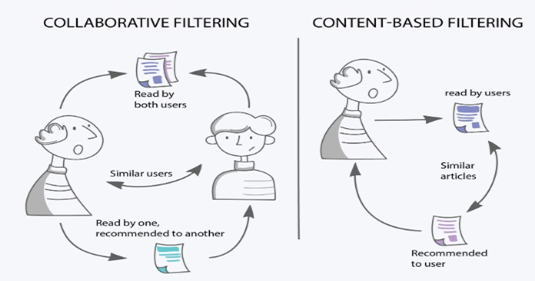How Data Science is changing the Face of Retail with Recommendation Systems
Ever wondered how retailers know exactly what you need? Dive into the world of recommendation systems and discover how they’re reshaping shopping experiences!
Janhavi Parate
5/8/20242 min read


Recommendation systems have become the bedrock of modern retail. Business interactions with a customer and streamlining their working processes have vastly been altered for businesses. Using data science techniques to gather and analyze customer behavior, preferences, and purchasing pattern helps businesses significantly personalize product offers, which also boosts customer satisfaction through enhanced shopping experience and better sale performance. Moreover, it is possible to determine consumer trends using recommendation systems so that the retailers can make data-driven decisions based on the levels of inventory, marketing strategies, and even pricing.
Types of Recommendation Systems
1. Collaborative Filtering: This technique identifies patterns by comparing users with similar behaviors to generate recommendations.


2. Content-Based Filtering: It gives recommendations based on the features of products a user has interacted with, focusing mainly on item-to-item similarity.
3. Hybrid Systems: Integration of both methods, collaborative as well as content-based, results in hybrid models which are more accurate and robust.
Real-World Impact
E-commerce Personalization: Recommendation systems are used in Amazon and Netflix to suggest to the user appropriate products, shows, or services.
In-Store Enhancements: The retailers use loyalty programs and targeted promotions to offer a personalized shopping experience.
Business Decision-Making: Analyzing purchasing trends helps retailers optimize their inventory management and marketing strategies.
Challenges
Cold Start Problem: Limited data on new users or products can restrict the effectiveness of recommendations.
Data Privacy: Maintaining user trust requires strict adherence to data protection regulations.
Scalability: Real-time processing of large databases for thousands and millions of clients is computationally expensive.
The Future
Emerging technologies, such as explainable AI and context-aware systems, are poised to revolutionize the functionality and transparency of recommendation engines. With the usability of explainable AI, businesses and users will be able to understand what a particular set of recommendations really is, which will foster trust and inform decision-making. On the other hand, context-aware systems will improve personalization as they include location, time of day, browsing history, and even emotional state in real-time. These advancements will bring about a richer and more dynamic user experience, where recommendations will closely align with the needs and preferences of the individual. As these technologies mature, they will probably blend into retail ecosystems, providing customers not only with relevant suggestions but also with an interactive and adaptive shopping journey.


Connect
Join us in advancing data science and AI.
© 2025. All rights reserved.


